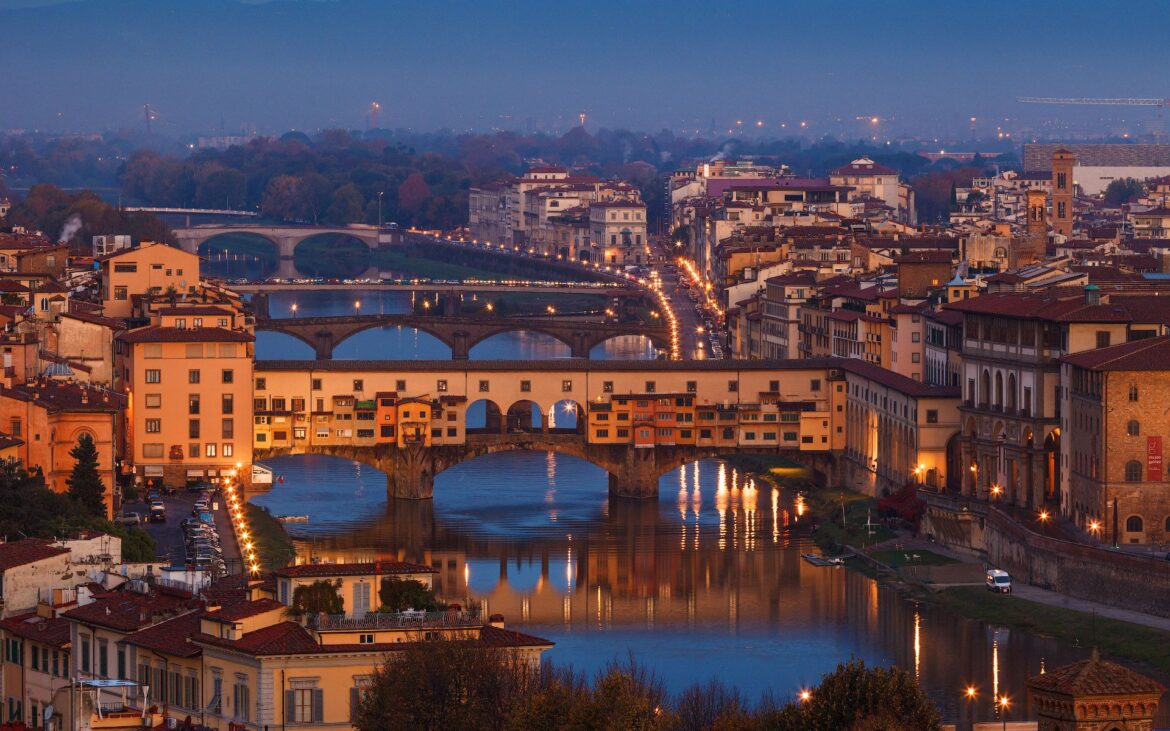Florence: The Cradle of the Renaissance
Nestled in the heart of Tuscany, Florence is more than just a city — it’s a living museum, a birthplace of genius, and a celebration of beauty in every form. For travelers drawn to art, history, architecture, or simply the romance of Italy, Florence offers an unforgettable journey into one of the world’s most culturally rich destinations.
A City Steeped in History
Florence rose to prominence in the 14th and 15th centuries as a center of trade, banking, and political power. It was the home of the Medici family, powerful patrons of the arts who supported legendary figures like Michelangelo, Botticelli, and Leonardo da Vinci. Today, walking through the city feels like stepping back into the Renaissance — a golden age that shaped the future of Europe.
The city’s historic center is a UNESCO World Heritage Site, packed with cobblestone streets, grand piazzas, and architectural masterpieces. At every corner, Florence whispers its past — and invites you to listen.
Artistic Treasures
Florence is a paradise for art lovers. The Uffizi Gallery houses one of the world’s greatest collections of Renaissance art, featuring works by Botticelli (The Birth of Venus), Leonardo, Raphael, and Caravaggio. Just a short walk away, the Accademia Gallery is home to Michelangelo’s David, an awe-inspiring sculpture that draws visitors from around the globe.
Beyond the museums, art is woven into the fabric of the city. The Duomo, or Cathedral of Santa Maria del Fiore, dominates the skyline with its iconic red-tiled dome engineered by Filippo Brunelleschi — a groundbreaking architectural feat. Climb to the top for panoramic views of the city and the Tuscan hills beyond.
The Baptistery of San Giovanni, with its gilded Gates of Paradise by Lorenzo Ghiberti, and Giotto’s Bell Tower complete the cathedral complex, making Piazza del Duomo a hub of architectural brilliance.
Charming Streets and Squares
Florence is a city best explored on foot. Meandering through the Oltrarno district reveals a more local side of the city, filled with artisan workshops, family-run trattorias, and quieter piazzas. Piazza della Signoria, once the political heart of Florence, is lined with statues and historical buildings, including the imposing Palazzo Vecchio.
Nearby, the Ponte Vecchio, Florence’s oldest bridge, is a picturesque span across the Arno River. Lined with shops selling gold and jewelry, it has been a bustling commercial site since the 14th century.
In the evening, as the city glows under soft lights and the sound of violins fills the piazzas, Florence reveals its more romantic and intimate soul.
Food and Wine
Florentine cuisine is hearty, simple, and delicious. Dishes often highlight fresh local ingredients — wild boar, porcini mushrooms, olives, and tomatoes. Don’t miss bistecca alla fiorentina, a massive T-bone steak grilled to perfection, or ribollita, a traditional Tuscan bread and vegetable soup.
Florence is also an excellent base for tasting Chianti wine, produced in the surrounding hills. Many vineyards offer tastings and tours, providing a scenic escape just beyond the city.
For dessert, grab a scoop of gelato — Florence is believed to be its birthplace — or sip a sweet Vin Santo with cantucci (almond biscuits).
Culture and Craftsmanship
Florence isn’t just about its past — it’s a city that continues to inspire. Its streets are filled with craft shops, leather artisans, goldsmiths, and fashion designers. The San Lorenzo Market is perfect for finding quality leather goods, while Via de’ Tornabuoni offers luxury shopping in elegant surroundings.
The city also hosts cultural events year-round: concerts, operas, exhibitions, and the famous Calcio Storico, a centuries-old combination of soccer, rugby, and wrestling held every June.
Practical Tips
Best time to visit: Spring (April–June) and early autumn (September–October) offer pleasant weather and fewer crowds.
Getting around: Florence’s historic center is compact and walkable. Most major sites are within 15 minutes of each other.
Tickets: Book tickets in advance for popular attractions like the Uffizi, Accademia, and Duomo climb to avoid long queues.
Language: Italian is spoken, but English is widely understood in tourist areas.
Florence is more than a destination — it’s a feeling. It’s the wonder of standing before a masterpiece, the warmth of a Tuscan sunset over terracotta rooftops, the aroma of fresh pasta and espresso, and the quiet hum of centuries of human creativity. For those who visit, Florence doesn’t just stay in the memory — it lingers in the heart.


